How To Mow The Lawn Properly | The Ultimate Guide
Homeowners take great delight in cultivating a lawn that is both luxuriant and healthy over the course of the year. A lawn that has been meticulously maintained not only adds to the aesthetic appeal of your home but also creates an area that can be used for recreation and other activities outside. One of the fundamental aspects of lawn care is proper mowing. In this comprehensive guide, we’ll walk you through the essential steps and tips for How to mow the lawn properly.
Is It Really Necessary to Mow the Lawn?
The question of whether mowing the lawn is an essential task often sparks debates among homeowners and gardening enthusiasts. Some might ponder if this regular chore is truly necessary, especially considering nature’s ability to thrive and rejuvenate without human intervention. In this segment, let’s delve deeper into this topic, debunking common misconceptions and shedding light on the importance of regular lawn mowing.
Myth 1: Nature Knows Best
One prevailing misconception is that nature can take care of itself without the need for human interference. While it’s true that ecosystems can sustain themselves, residential lawns often differ from natural landscapes. Lawns typically consist of a specific grass species chosen for its aesthetics and utility, and this cultivated environment can benefit from a helping hand to thrive.
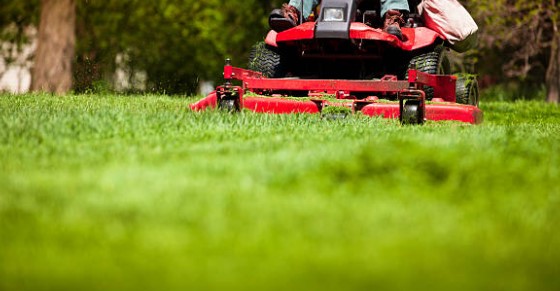
Myth 2: Longer Grass is Healthier
Another misconception suggests that leaving the grass to grow taller is better for its health. While longer grass does provide some benefits, such as shading the soil and promoting deeper root growth, allowing grass to grow excessively tall can have drawbacks. Tall grass can become more susceptible to diseases and pests, and it might bend under its weight, creating uneven patches in your lawn.
Myth 3: Less Mowing Means Less Maintenance
It could appear as though decreasing the number of times you mow the grass would be an effective strategy to reduce the amount of work involved in lawn maintenance. Nevertheless, this strategy may result in outcomes that were not intended. If you don’t mow your lawn very often, the grass will eventually get too tall, and the lawnmower will have a harder time cutting it evenly. In addition to this, when you do eventually get around to mowing your lawn, the abrupt loss of a large amount of grass can put a strain on the plants and lead to an uneven appearance.
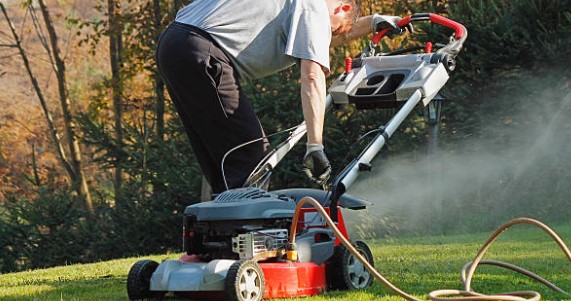
The age-old question of whether lawn mowing is necessary can be put to rest with a resounding yes. The practice of regular mowing contributes significantly to the health, aesthetics, and functionality of your lawn. By dispelling common misconceptions and understanding the benefits, you can approach lawn mowing as a proactive and rewarding endeavor that enriches your outdoor living space. After all, a well-maintained lawn isn’t just a testament to your dedication; it’s a canvas for natural beauty and a hub of relaxation for you and your loved ones.
Items that will be required to cut grass properly
In order to get started on the path to achieving a lawn that is flawlessly groomed, you need more than just passion; you also need the appropriate instruments for the job. A homeowner requires an assortment of equipment to accomplish the artistry of a well-groomed lawn, much like a painter needs a palette of colors to produce a masterpiece. In the same way, a painter relies on a palette of colors to create a work of art.
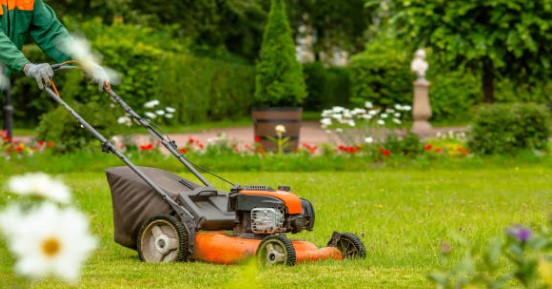
Lawn Mower
Pick a lawn mower that can handle the size of your garden as well as your own personal preferences. There are several distinct varieties of mowers on the market, including those driven by gas, electric (either corded or cordless), and manual push mowers. Choose the one that addresses your requirements as well as the dimensions of your garden.
Gasoline or Charged Battery
If you’re using a gas-powered mower, you’ll need gasoline to fuel the engine. Ensure you’re using fresh, unleaded gasoline with the correct octane rating as specified in the mower’s manual. If you have an electric mower, make sure the battery is fully charged before you start mowing.

Mowing Gloves
When you’re operating the mower, the gloves that come with it will shield your hands from injury, which is especially important if you need to do maintenance duties like cleaning the blade or removing debris from the cutting deck. They protect against cuts and blisters and make it easier for you to have a firm hold.
Safety Glasses
When you mow your lawn, there is always the possibility that dust, debris, or grass clippings may be sent flying into the air as a result of the procedure. While mowing, putting on a pair of safety glasses will shield your eyes from a wide variety of potential risks, allowing you to have a more pleasurable and risk-free experience overall.
Rake
After mowing the lawn, picking up the grass clippings and other debris requires the use of a rake. It makes it easier for you to collect waste such as grass clippings, leaves, and other organic matter that may have gathered on your lawn. Not only does a well-kept lawn seem nicer, but it also promotes the development of grass that is of higher quality.

Having these materials and tools ready ensures that you have a smooth and efficient mowing experience. Always prioritize safety by wearing appropriate clothing and protective gear as needed while operating your mower and related equipment.
How to Mow The Lawn Correctly in 11 Steps
Mowing the lawn is more than just a routine chore; it’s a skillful practice that can transform your outdoor space into a thriving, vibrant oasis. While it may seem straightforward, the art of mowing involves a delicate balance of techniques and strategies. In this comprehensive guide, we’ll explore the eleven fundamental steps to mowing your lawn correctly, ensuring not only its aesthetic appeal but also its overall health and vitality.
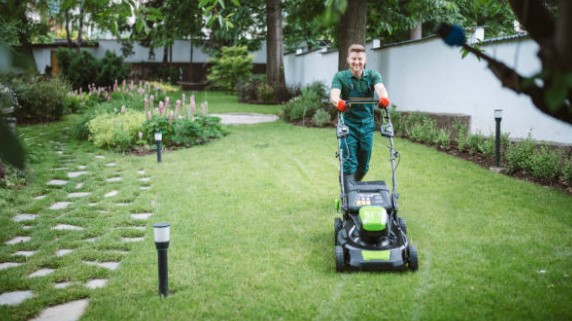
Step 1: Prepare the Lawn Mower
- Locate the oil fill cap on the mower’s engine. Check the oil level using the dipstick. If it’s low, add the appropriate type of oil recommended in your mower’s manual.
- If you’re using a gas-powered mower, ensure the gasoline tank is filled with fresh, unleaded gasoline. Be cautious not to overfill.
- For electric mowers, make sure the battery is fully charged according to the manufacturer’s instructions.
- Inspect the mower’s blade visually, making sure it’s sharp, free from damage, and securely attached. If needed, sharpen or replace the blade.
Step 2: Clear the Lawn
- Walk around the perimeter of the lawn and pick up any large debris, such as sticks, pebbles, or toys, that might possibly cause harm to the mower or create an uneven surface for mowing.
Step 3: Adjust Mower Settings
- Look for the height adjustment lever on your mower. Set the cutting height to your desired level. A good rule of thumb is to remove no more than one-third of the grass height to promote healthy growth and root development.

Step 4: Start Mowing
- Position the mower at the edge of your lawn, ensuring the wheels are on the grass and not on any hard surfaces like sidewalks.
- If using a gas mower, hold down the primer bulb (if present) a few times to prime the engine.
- Engage the engine by pulling the starter cord or using the electric starter, depending on your mower type.
Step 5: Mow in Rows
- Begin mowing along one side of the lawn, pushing the mower in a straight line.
- Overlap each passes slightly to ensure no patches are missed.
- As you reach the end of each row, turn the mower around carefully to start mowing the next row. This back-and-forth pattern will help you cover the entire area systematically.
Step 6: Maintain a Steady Pace
- While you are cutting the grass with the mower, walk at a steady speed. It is best not to be in a hurry while you are cutting the grass since doing so might result in an uneven cut.

Step 7: Change Direction
- Once you’ve completed a few rows in one direction, change your mowing direction by 90 degrees. This prevents the grass from leaning excessively in one direction and gives your lawn a more even appearance.
Step 8: Trim Around Obstacles
- When you come across barriers like trees, flower beds, or other impediments, switch to a string trimmer or edger so you can mow cleanly around them and create defined margins.
Step 9: Deal with Slopes
- If your lawn contains slopes or hills, you should mow in the opposite direction of the slope rather than going up and down the slope. This helps to avoid the erosion of the soil and ensures that the cutting is level.
Step 10: Clean Up
- Use a rake to gather any grass clippings or other debris that may have collected on the surface of the grass after you have finished mowing the lawn. You may have noticed that some debris has formed on the surface of the grass.
Step 11: Dispose of Clippings
- You have the option of leaving the grass clippings on the lawn, where they will serve as a natural fertilizer, or collecting them in a bag attachment on the lawn mower, where they may then be thrown away or composted.

You will be able to mow your lawn quickly and effectively if you follow these comprehensive methods, leaving it appearing tidy and as though it has been cared for.
Tips for Maintaining a Beautiful Lawn
A gorgeous lawn is more than just a few square feet of grass; it’s a complex ecosystem that has to be cultivated, cared for, and managed with some level of knowledge. In addition to the act of mowing, a thorough routine of other lawn management practices is essential to the success of a well-maintained lawn. In addition to proper mowing techniques, consider the following tips for a vibrant and lush lawn:
Regular Mowing and Height Adjustment
Imagine for a moment that Goldilocks is looking for the three bears’ missing porridge in a garden. Finding the right height to mow your lawn is essential to its health, just like she did when she was looking for the perfect porridge. Aim to keep your lawn in the “Goldilocks” zone when it is neither too short nor too tall. Adjust the cutting height of the blades on your lawnmower to the height that is advised for the kind of grass that you are cutting. This sweet spot strikes a balance between the formation of shadow, the growth of roots, and the appearance of lushness.
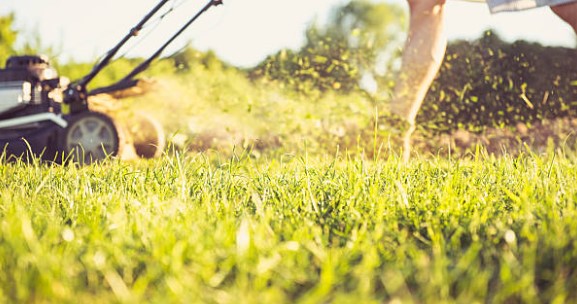
Proper Watering Techniques
Water is the elixir of life, and your lawn is no exception. Yet, watering requires finesse. Rather than shallow, frequent watering, opt for deep, infrequent sessions. This approach encourages the grass’s roots to delve deeper into the soil, establishing a robust foundation that withstands drought and environmental stress. For a precise touch, employ the “finger test.” Insert your finger into the soil; if it’s dry beyond the first inch, it’s time to water.
Fertilization and Weed Control
A lush, verdant lawn is often a product of balanced nutrition. Fertilization provides your grass with the essential nutrients it craves. However, avoid overzealousness – too much fertilizer can lead to excessive growth and potential damage. Embrace a schedule that aligns with your grass type, considering both time and frequency. And while feeding your lawn, keep an eye on pesky weeds. Tackle them strategically to prevent their encroachment and maintain the lawn’s pristine appearance.

FAQs
How often should I water my lawn during the hot summer months?
The scorching embrace of summer can turn your lawn into a thirsty oasis. To keep it well-hydrated, aim for a weekly water dosage of 1 to 1.5 inches. However, don’t take this advice as a universal decree; your grass type and local climate play starring roles. The key is to strike a balance between quenching the lawn’s thirst and preventing waterlogging that can lead to issues like disease and root rot.
What is the best way to deal with stubborn weeds on my lawn?
The bane of every lawn enthusiast’s existence: weeds. Fear not; a well-thought-out strategy can be your shield. Deploy a multi-pronged approach. Begin with selective herbicides that target specific weeds while sparing your precious grass. For those persistent invaders, channel your inner gardener and engage in manual removal. Ensure that your lawn is well-fed, as healthy grass naturally crowds out weeds. Vigilance and patience are your allies on this weed-banishing journey.

When is the ideal time to apply fertilizer for a lush and healthy lawn?
Fertilization is akin to giving your lawn a gourmet meal. But timing is key, and this question delves right into it. For cool-season grasses, the prime feast times are early spring and late fall. These periods align with their peak growth phases. Warm-season grasses, however, prefer a single feast in late spring when they awaken from their slumber. The mantra here is to provide nourishment when your grass is most receptive and in need.
Conclusion – The Key to Mowing the Lawn Faster

Acquiring the knowledge of how to mow the lawn correctly is essential to maintaining a lush and lovely yard. When you take on the responsibility of being a steward for the health and appearance of your lawn, keep in mind that each individual blade of grass is like a brushstroke on the canvas that is your outdoor refuge. An homage to the connection that exists between people and the natural world is rendered by the fact that you have made an effort to learn the intricacies, put in place skilled tactics, and cultivate your grass with care. You are not just going from one place to another as you walk across your carefully manicured lawn; rather, you are embarking on an adventure that fosters beauty, harmony, and the profound connection that exists between you and the ground that lays beneath your feet.
Related Articles